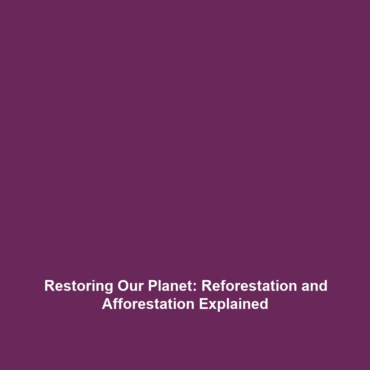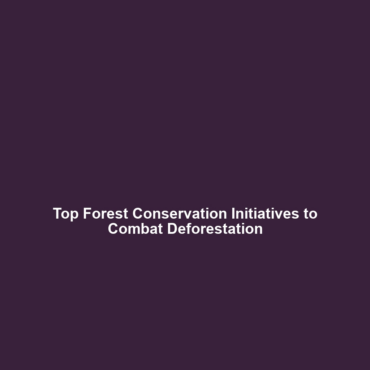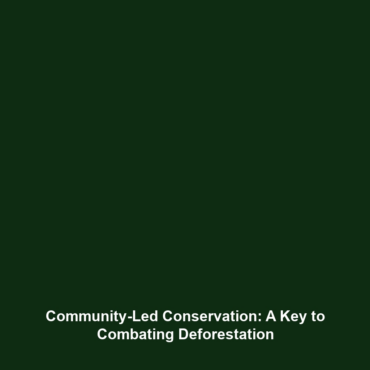Reforestation and Afforestation: Restoring Degraded Landscapes
Reforestation and afforestation are essential strategies in the fight against deforestation and biodiversity loss. These processes not only aid in restoring degraded landscapes but also play a critical role in mitigating climate change and enhancing ecosystem services. As our planet faces severe challenges due to widespread habitat destruction, understanding the impact of reforestation and afforestation is more important than ever for preserving biodiversity and ensuring a sustainable future.
Key Concepts
Reforestation refers to the process of replanting trees in deforested areas, while afforestation involves planting trees in previously non-forested lands. Both are vital for:
- Restoring Ecological Balance: They help restore habitats for countless species.
- Carbon Sequestration: Trees absorb carbon dioxide, mitigating climate change.
- Soil Rehabilitation: Tree roots prevent soil erosion and improve soil quality.
Understanding these concepts is crucial within the broader scope of deforestation and biodiversity loss, as they provide practical solutions to these pressing environmental issues.
Applications and Real-World Uses
Reforestation and afforestation have significant applications in various fields:
- Climate Change Mitigation: Projects like the UN’s Bonn Challenge aim to restore 150 million hectares of deforested and degraded lands globally.
- Community Resilience: Engaging local communities in forest management promotes biodiversity and job creation.
- Sustainable Agriculture: Agroforestry, which integrates trees with crops, enhances biodiversity and farm productivity.
How reforestation and afforestation is used in combating deforestation and biodiversity loss encompasses a range of initiatives that seek to balance ecological and economic needs.
Current Challenges
Despite their benefits, implementing reforestation and afforestation faces several challenges:
- Funding Limitations: Many projects lack the financial resources needed for extensive implementation.
- Land Use Conflicts: Competition between agricultural land and forests can hinder efforts.
- Ecological Risks: Incorrect species selection can lead to poor outcomes, impacting local biodiversity.
These challenges of reforestation and afforestation emphasize the need for strategic planning and community involvement.
Future Research and Innovations
The future of reforestation and afforestation looks promising, with ongoing research aiming to enhance their effectiveness:
- Genetic Engineering: Innovations in plant genetics may create more resilient tree species.
- Drones and AI: Technology is increasingly used for monitoring and planting trees.
- Restoration Ecology: New methods are being developed to restore ecosystems more efficiently.
Future research will continue to explore how these innovations can combat deforestation and biodiversity loss, paving the way for sustainable practices.
Conclusion
In summary, reforestation and afforestation are vital tools for restoring degraded landscapes, addressing deforestation, and enhancing biodiversity. Their implementation not only has ecological benefits but also economic and social advantages. As we move forward, collective action, innovative solutions, and dedicated research will be key in overcoming the challenges we face. For more on related topics, consider exploring related articles on biodiversity conservation.


